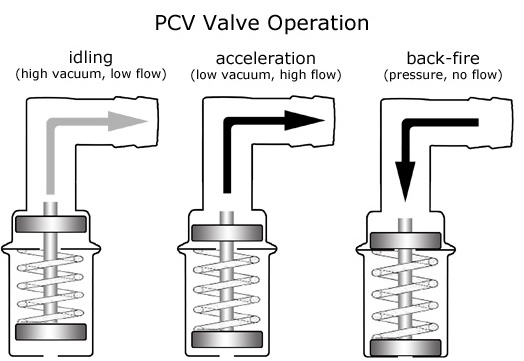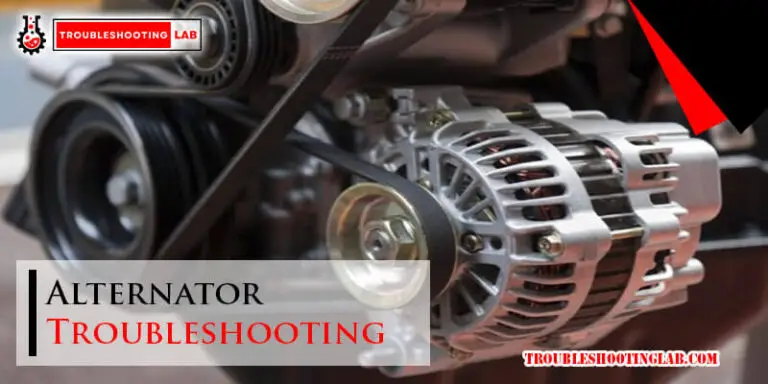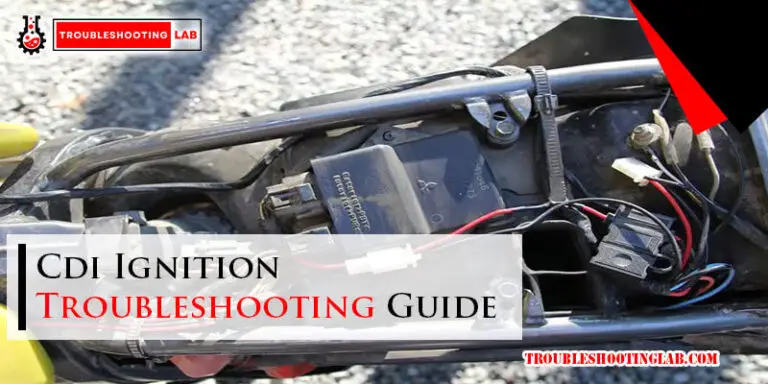Pcv Valve Troubleshooting: Expert Tips for Smooth Engine Performance
Understanding PCV valve issues is crucial for your car’s health. A malfunctioning PCV valve can cause various engine problems.
In this blog, we’ll explore the ins and outs of PCV valve troubleshooting. This tiny component plays a significant role in your vehicle’s performance. Learning to identify and fix PCV valve issues can save you time and money. Whether you’re an experienced mechanic or a car owner wanting to learn more, this guide will help you understand the symptoms and solutions for a faulty PCV valve.
Keep reading to ensure your engine runs smoothly and efficiently. Proper maintenance and timely troubleshooting can prevent bigger problems down the road. Let’s dive into the world of PCV valves and keep your car in top shape.
Introduction To Pcv Valve
The PCV valve (Positive Crankcase Ventilation valve) is a small but crucial component in your car’s engine. It plays a key role in managing the engine’s emissions and maintaining its overall health. Understanding the purpose and function of the PCV valve helps in troubleshooting and ensuring your engine runs smoothly.
Purpose And Function
The primary purpose of the PCV valve is to control the release of gases from the crankcase. It prevents harmful gases from being released into the environment. Instead, it redirects these gases back into the combustion chamber, where they are burned again.
The function of the PCV valve involves regulating the flow of these gases. This ensures that the engine runs efficiently. The valve opens and closes depending on the engine’s needs. This process helps in reducing the buildup of pressure inside the crankcase.
Importance For Engine Health
The PCV valve is vital for maintaining engine health. It prevents the buildup of sludge and other harmful substances inside the engine. This sludge can cause severe damage over time, leading to costly repairs.
A properly functioning PCV valve also improves fuel efficiency. It ensures that the engine burns fuel more effectively. This results in better mileage and lower emissions.
Regular maintenance and inspection of the PCV valve can save you from potential engine troubles. Checking the PCV valve is an essential part of routine vehicle care.

Credit: www.youtube.com
Common Pcv Valve Issues
The PCV (Positive Crankcase Ventilation) valve plays a critical role in your car’s engine. It helps control emissions and keeps the engine running smoothly. But, like any part, it can develop issues. Identifying and addressing these problems is crucial.
Clogged Valve
A clogged PCV valve is a common issue. Dirt and sludge can block it. This blockage prevents the valve from working properly. As a result, pressure builds up in the engine. The engine may start to run rough. You might notice a decrease in fuel efficiency. In some cases, oil leaks occur. Regular maintenance can help prevent this problem.
Leaking Valve
A leaking PCV valve is another frequent issue. The valve may develop cracks or wear out. This causes it to leak. When the valve leaks, it fails to regulate pressure. This can lead to engine performance problems. Oil contamination is also possible. You might see oil in the air filter. Replacing the valve usually solves the issue.
Symptoms Of A Faulty Pcv Valve
A faulty PCV (Positive Crankcase Ventilation) valve can cause many problems in your vehicle. Recognizing these symptoms early can save you from expensive repairs. Let’s explore some common signs of a bad PCV valve.
Engine Misfires
If your engine misfires, it may be due to a faulty PCV valve. This valve regulates the air-fuel mixture. A malfunctioning valve can disrupt this balance. As a result, the engine misfires. You might notice a rough idle. Your car may also hesitate during acceleration. These issues can affect performance.
Oil Leaks
Oil leaks can also indicate a bad PCV valve. This valve helps manage pressure inside the engine. If it fails, pressure builds up. This can force oil out of seals and gaskets. You might see oil spots under your car. Or you might notice oil on the engine. Addressing this issue promptly can prevent further damage.

Credit: www.reddit.com
Diagnosing Pcv Valve Problems
The PCV (Positive Crankcase Ventilation) valve is essential for your vehicle’s engine health. It helps reduce harmful emissions and maintain engine efficiency. When the PCV valve fails, it can lead to various engine problems. Below, we will explore two key methods for diagnosing PCV valve issues: visual inspection and pressure testing.
Visual Inspection
Start with a visual inspection of the PCV valve and related components. This method is simple and effective for spotting obvious issues.
- Locate the PCV valve: Typically found on the valve cover or intake manifold.
- Check for damage: Look for cracks, broken hoses, or loose connections.
- Inspect for sludge: Sludge or oil buildup can indicate a clogged PCV valve.
- Listen for noise: A rattling sound often means the valve is working, while silence can indicate a problem.
Pressure Testing
Pressure testing is a more detailed method for diagnosing PCV valve issues. It involves measuring the pressure in the crankcase to ensure the PCV valve is functioning correctly.
- Connect a vacuum gauge: Attach the gauge to the PCV valve port.
- Start the engine: Allow it to idle and observe the gauge.
- Check the readings: A healthy PCV valve should show a steady vacuum. Fluctuations or low pressure can indicate a problem.
- Perform a smoke test: Introduce smoke into the crankcase and watch for leaks. Leaks suggest a faulty PCV valve or related components.
By performing these diagnostic methods, you can determine if your PCV valve needs repair or replacement, ensuring your engine runs smoothly and efficiently.
Diy Pcv Valve Replacement
Replacing the PCV (Positive Crankcase Ventilation) valve can improve your car’s performance. The PCV valve helps control harmful emissions. It also keeps your engine running smoothly. If it fails, your car may run poorly. Here’s how you can replace the PCV valve yourself.
Required Tools
- Screwdriver (Flathead or Phillips, depending on the vehicle)
- Pliers
- Wrench set
- New PCV Valve
- Gloves
- Rags or paper towels
- Safety glasses
Step-by-step Guide
-
Locate the PCV Valve:
Open your car’s hood. Find the PCV valve. It is usually on the valve cover. Check your vehicle’s manual for exact location.
-
Remove the PCV Valve:
Use pliers to remove the hose connected to the PCV valve. Use the appropriate wrench or screwdriver to remove the valve. Keep these parts safe.
-
Inspect the PCV Valve:
Check the old valve. If it is dirty or clogged, replacement is needed. Clean the surrounding area with a rag.
-
Install the New PCV Valve:
Insert the new PCV valve. Secure it with the wrench or screwdriver. Reattach the hose. Ensure all connections are tight.
-
Check for Leaks:
Start your engine. Check the PCV valve area for leaks. Ensure everything is secure and working properly.
Replacing the PCV valve is simple with the right tools. Follow these steps to keep your car in top shape.
Preventive Maintenance Tips
Maintaining your PCV valve is crucial for your vehicle’s performance and longevity. Regular care helps prevent costly repairs and ensures your car runs smoothly. Here are some preventive maintenance tips to keep your PCV valve in top condition.
Regular Inspections
Regular inspections are key to identifying potential issues early. Check the PCV valve every time you perform an oil change. Look for signs of wear or damage. A quick inspection can save you from bigger problems down the road.
- Look for oil leaks around the valve.
- Listen for unusual noises from the engine.
- Ensure the valve moves freely.
Performing these checks ensures your PCV valve functions properly.
Scheduled Replacements
Scheduled replacements are essential for maintaining your vehicle’s health. The PCV valve should be replaced according to your car manufacturer’s recommendations.
- Check your vehicle’s manual for replacement intervals.
- Replace the valve every 30,000 to 50,000 miles.
- Use high-quality parts for replacements.
Following a replacement schedule prevents unexpected failures and keeps your engine running efficiently.
Choosing The Right Pcv Valve
Picking the correct PCV valve is crucial for your car’s health. A good PCV valve ensures that your engine runs smoothly. It also helps in maintaining fuel efficiency. But how do you choose the right one? Let’s explore the key aspects.
Oem Vs Aftermarket
Should you go for an OEM (Original Equipment Manufacturer) PCV valve or an aftermarket option? Both have their pros and cons.
- OEM: These are made by the car’s original manufacturer. They fit perfectly and offer reliable performance.
- Aftermarket: These are made by third-party companies. They are often cheaper but may not fit as well.
For the best results, consider the age and condition of your vehicle. Older cars might benefit more from OEM parts. Newer models can often handle aftermarket options without issues.
Compatibility Checks
Ensuring compatibility is key when choosing a PCV valve. An incompatible valve can cause engine problems. Here are some tips to check compatibility:
- Consult your vehicle’s manual: It will list the specific PCV valve models that fit your car.
- Check online databases: Many websites offer compatibility tools. Enter your car’s make and model to find matching parts.
- Inspect the existing valve: Compare it to the new one. Ensure that the size and connections match.
Proper compatibility checks prevent installation issues. They also ensure optimal engine performance.
Professional Help
When dealing with PCV valve issues, sometimes professional help is necessary. Mechanics have the tools and experience to diagnose and fix problems effectively. They ensure your vehicle runs smoothly and efficiently. Seeking expert advice can save you time and prevent further damage.
When To Consult A Mechanic
Consult a mechanic if you notice persistent engine problems. Symptoms include rough idling, poor fuel economy, or increased oil consumption. If the check engine light remains on, it’s time to seek professional help. Mechanics can identify and fix hidden issues that you might miss.
Another reason to consult a mechanic is when you lack experience. Working on PCV valves can be complex. Incorrect handling can cause more damage. Professional mechanics have the expertise to handle such tasks safely and accurately.
Cost Estimates
Understanding cost estimates helps you plan your budget. Professional PCV valve replacement typically costs between $50 and $150. This range depends on your vehicle’s make and model. Labor costs contribute significantly to the total price.
Some vehicles have more complex systems. This complexity increases the cost. Mechanics provide detailed estimates before starting work. This transparency helps you make informed decisions. Always ask for a detailed breakdown of costs to avoid surprises.

Credit: www.mri-auto-diagnostics.com
Frequently Asked Questions
What Is A Pcv Valve?
A PCV valve controls the flow of gases from the crankcase to the intake manifold.
How Do You Know If A Pcv Valve Is Bad?
Look for engine misfires, oil leaks, and increased fuel consumption.
Can A Faulty Pcv Valve Cause A Rough Idle?
Yes, a bad PCV valve can cause a rough idle and poor engine performance.
How Often Should You Replace A Pcv Valve?
Replace the PCV valve every 20,000 to 50,000 miles, depending on your vehicle.
Can A Clogged Pcv Valve Cause Engine Damage?
Yes, a clogged PCV valve can lead to increased pressure and potential engine damage.
Conclusion
Troubleshooting your PCV valve is crucial for engine health. Regular checks can prevent costly repairs. Pay attention to symptoms like rough idling or oil leaks. Replace the valve if needed. Your vehicle will run smoother and more efficiently. Always consult your car’s manual for guidance.
Keeping your PCV valve in good condition benefits your car’s performance. Simple maintenance can save you time and money. Stay proactive and enjoy a better driving experience.






